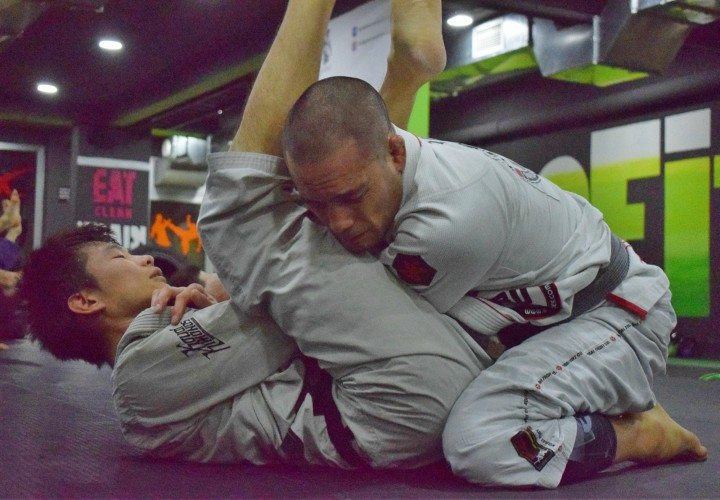When studying a subject, it’s always best if you can find information as close to the source as possible. In history, if you can find direct information from someone that experienced the event, that’s considered a primary source. If you find information that someone else wrote after getting it from a primary source, that’s considered a secondary source. Primary sources would be considered more valuable than secondary sources, and secondary sources would be considered more valuable than tertiary (third-hand) sources, and so on and so forth. So, if primary sources are the best, what is the primary source of jiu-jitsu?
Is the primary source your coach? No, I don’t think so. You can bet that your coach has a lot of good knowledge, and he can certainly expedite the process of learning for you, but his knowledge will largely have come from two things. One, his coaches, who also learned from other people, making this knowledge secondary or tertiary. And two, his own experience rolling and competing. This knowledge will be more direct. He will have direct experience executing these techniques in a live setting. Still though, in this context, I don’t think that’s enough to make him a primary source, because you have access to that exact same experience.
Historians settle for people who were there because they do not have a time machine to experience an event for themselves. You have the option to roll and see what it’s like to try these moves out firsthand. Rolling is the primary source of knowledge in jiu-jitsu. You can and should learn things from your coach, he can help you avoid pitfalls he fell into early on. However, no matter how good a teacher your coach is, simply following his instructions will always leave you with a slightly worse version of the knowledge he has. No matter how much you drill a move, there are some things that you can only discover through trial and error for yourself.
There could be a small detail that you only realize the importance of when someone’s trying to defend, or a new transition that you discover when someone does shut down your move. Whatever the case, knowledge gained from rolling is invaluable because it is brutally honest. It doesn’t care about your ego, or what you think should work. There is only what works and what doesn’t. This makes rolling the most important teaching tool in jiu-jitsu.
Free rolling does have one flaw though. It does not force you to try or learn new things. Depending on your skill level, you may be able to drag all your partners into a few positions that you excel at and put them away with your favorite moves. If you don’t have the self-discipline to try new things, free rolling can cause your game to become narrow. Depending on your perspective this can be a good or a bad thing, but I believe the key to continuous improvement lies in experimentation.
This is where positional rolling comes in. This refers to starting a roll from a specific position, say back control. The person on the back will attempt to submit, and the person who’s back has been taken will attempt to escape. Once either of those two things happens, the roll resets, with one partner taking the other’s back again. This is invaluable for several reasons.
One, the nature of the game seems to inspire less competitiveness, leaving the people involved more open to try out different things. It feels less like a fight, and more like a game, with one party starting with a clear advantage. It’s less damaging to your ego if you get beat in what is essentially an unfair fight, so you might be open to trying out different methods of escape and attack.
Two, positional rolling allows for immediate reset. In free rolling, if you make a mistake and get caught, you might not encounter that situation again for the rest of the night. With positional rolling, you’ll be put in the same situations over and over again. This means that you can try something, see how it works, make tweaks and try it again. This gives you plenty of opportunity to learn the nuances of a technique, and identify which details make the most difference for you.
Three, positional rolling forces you to work from bad positions. Many people who struggle with bad positions become experts at not being put in those positions. This isn’t necessarily bad, until you fight someone who’s an expert at putting you there. You don’t want the first time you’ve had your back taken in months to be when a black belt who loves the bow and arrow puts you there against your will. Working from bad positions and becoming confident in them is tremendously valuable for your jiu-jitsu. If you’re confident in your escapes, you can attack without fearing the counter. You can keep your cool even if things don’t go your way and mount a comeback. Keeping your escapes and defenses sharp will give your jiu-jitsu a firm foundation, allowing you to roll without fear.
All of this works together to make positional rolling the king of jiu-jitsu training methods. It combines the specificity of drilling with the honest feedback of rolling. It forces you to develop a particular part of your game against an opponent who will let you know if it was effective not with their words, but with their actions. So, if this isn’t a regular part of your training, I encourage you to make it so soon.
John Brashear.
For more beautifully brutal kimura variations and set ups, you will want to take advantage of the knowledge of one of the most sought after MMA and grappling coaches on the planet, Neil Melanson. He has distilled his years of leading MMA champions into The Filthy Kimura Series and it can be yours by heading over to BJJ Fanatics!


















